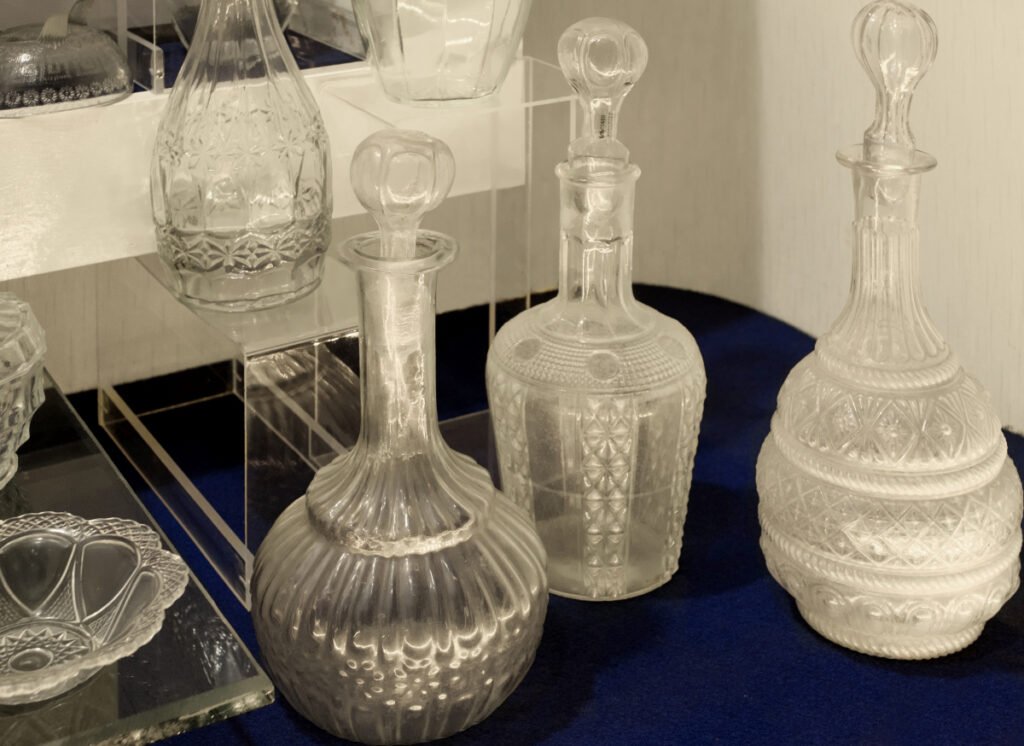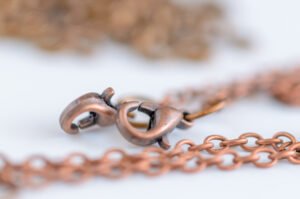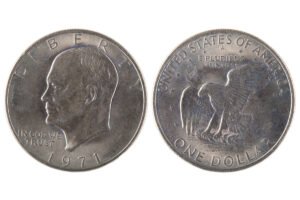Did you know that the stepped, blunt faceted patterns you see on the old glassware belong to the pressed glass era, a key attraction of the 1800s Victorian period? If you didn’t, you’re not alone! Because identifying pressed glass patterns among others, can be a tough task!
But interestingly, these patterns display some unique features like regular faceting and visible mold seams, which can help you spot them! Once you know it’s a pressed glass pattern, this guide will help you verify if it’s a vintage one and how to price it in the most efficient way!
Key Takeaways
- You can identify vintage pressed glass patterns by their aged patina, bubbles, crude molding lines & seams.
- Branded pressed glass patterns, such as those from Fenton or Northwood, cost more due to their natural designs & frosted finishes.
- You’ll get many listed pressed glass patterns like Daisy & Button, Hobnail, Royal Lace, etc. Of these, the Marigold & Hobnail ones are the most expensive.
- It’s not just the bowls; You can get pressed glass patterns with products like Cake stands, Trays, Baskets & Figurines too!
How to Know if a Pressed Glass Pattern Is Vintage?

You can identify vintage pressed glass patterns with their aged features – stains, mold marks, and blunt motifs. But if you want the valuable ones, it’s better to VERIFY the following features too:
- Intricate & Symmetrical patterns – Flowers, Geometric shapes, Stars, Fruits & Animals
- 3D, Folded or Bubbled ridges & seams
- Aged stains, Imperfections, Bubbles, or Molding lines
- Superior finishes – Gold trims, Etched details & Handpainted details
- Unique textures – Ribbed, Crinkle & Frosted
History & Evolution of Pressed Glass Patterns
The first collectible pressed glass pattern is from the 1800s. But even before that, we had some molded glass motifs from 1200 BCE Egypt. But these were really heavy – without any designs or patterns. In fact, many used old papyrus or leaves as molds and broke easily!
Then, in the 1800s, John P. Bakewell revived the art for all! Like, he used a plunger to shape and carve liquid glass. But this ‘Lacy’ pattern was rough and difficult to imitate.
So, in 1825, John made his own pressed glass machine. And he used it to make more ‘Lacy’ pattern products – bowls, decanters, and whatnot! With time, he explored more hobnail & floral designs with different glass brands too!
However, the 1920s saw a terrible economic depression, and so people moved to cheaper, simpler glass forms called ‘Depression Glass.’ You’ll still find some colored, pressed glass patterns from this era, but those won’t be intricate and precious.
7 Vintage Pressed Glass Patterns & Their Values

Here are the most popular and valuable vintage pressed glass patterns with their identification features and average values:
| Sr no. | Old Pressed Glass Pattern Name | Identification Features | Year | Designer | Estimated Value |
| 1. | Daisy & Button | A geometric pattern with small daisies, 8-sided buttons, and frosted finishes | 1800 – 1920 | Hobbs | $15 – 120 |
| 2. | Hobnail | Small, raised nubs with Pink, Red, or Purple walls & Ribbed finishes | 1800s | New England Glass Company | $20 – 300 |
| 3. | American Sweetheart | Curved scrolls & designs with a central mesh and grooves | 1920 | MacBeth – Evans Glass Company | $10 – 100 |
| 4. | Baltimore Pear | Intricate design of Pears & Leaves with Clear, Amber, Green & Blue walls | 1906 | Hazel Atlas Glass Company | $15 – 200 |
| 5. | Royal Lace | Floral pattern with central, stylized flowers, leaves, and a lacy design | 1887 | New England Glass Company | $15 – 150 |
| 6. | Fenton Peachblow | Exclusive peach-colored hues with smooth, ribbed edges | 1900s | Fenton Art Glass Company | $30 – 200 |
| 7. | Marigold | Bright yellow geometric patterns with small, raised dots | 1900s | Hazel Atlas Company | $15 – 300 |
Try to get pressed glass patterns with fused, blown, or lampwork glass for a better value.
6 Steps to Spot Vintage Pressed Glass Patterns & Value Them
Now let’s check how different factors like age, brand, and color change the value of different pressed glass patterns:
1. Trace the Manufacturing Date & Age of the Glass Items

Want to know if your pressed glass pattern is old and worth enough? Well, just rotate it and check for any date stamp on the base or seams. Also, check the finishes! Usually, the old 1830s patterns look textured, while the 1900s patterns are smooth.
But it’s not just the finishes! Read on to learn more about era-specific features & their values:
| Old Pressed Glass Pattern Year | Age | Top Collectible Features | Average Cost |
| 1820s | 194 – 203 years | Lacy, intricate designs with geometric, floral, pictorial, or patriotic designs & Gray or Purple tints | $50 – 400 |
| 1850s | 164 – 173 years | Exclusive Cup Plate, Thumbprint, or Eye motif designs with clear or colored glass sides | $20 – 300 |
| 1900s | 114 – 123 years | American pattern glass motifs with Hobnail, Daisy & Pineapple carvings | $10 – 250 |
| 1920s | 94 – 103 years | Colored – Pink, Green, Amber & Blue patterns with Romantic scrolls, Cherry blossoms, and branch designs | $5 – 100 |
2. Identify the Type of Glass Products

Old pressed glass patterns come in an array of products – dinnerware, cups, drinking glasses, you name it and have it! Of these, the typical bowls, dishes, and baskets might have old 1820s patterns, while the new products – ashtrays & figures might be common & cheaper.
Here’s how each pressed glass product impacts its final resale cost:
| Old Pressed Glass Products | Estimated Value |
| Bowls – Dessert, Fruit, Cereal & Mixing Bowls | $20 – 200 |
| Plates – Dessert, Bread, Cheese & Dinner Plates | $50 – 400 |
| Cake Stands, Casseroles & Coasters | $15 – 200 |
| Drinkware – Coffee cups, Glasses, Goblets, Decanters & Bottles | $10 – 100 |
| Trays & Small Baskets | $20 – 150 |
| Ashtrays | $5 – 80 |
| Figurines & Decorative Bells | $10 – 120 |
Small and new products, like ashtrays and figurines, might have colored Marigold or Fenton Peachblow patterns, but most of the old ones have clear, Hobnail, Royal Lace, or American Sweetheart designs.
3. Check the Brand & Manufacturer

Does your pattern have any embossed logos, signs, or marks? If yes, it’s a branded one worth $500 or more. And not just logos; you can spot them by their intricate patterns, gold-speckled inlays & regional designs too! Also, look for tasseled or laced edges on the sides!
Here’s a table to know the worth of each pressed glass brand:
| Old Pressed Glass Brands | Special & Unique Features | Average Value |
| Boston & Sandwich Glass Company (1825) | Intricate Lacy designs with ribbed edges and whitish walls | $20 – 250 |
| Fenton Art Glass Company | Superior Hobnail & Carnival motifs with frosted walls | $20 – 300 |
| Heisey Glass Company (1896) | Clear & Transparent glass walls with miniature cut-glass motifs | $10 – 250 |
| Indiana Glass Company | Intricate motifs – Daisy, Button, Tea room & Grape with a signed logo at the base | $30 – 150 |
| Northwood Glass Company | Blue or Ivory pressed glass designs with etched Grape, Cable, or natural carvings | $30 – 700 |
| Anchor Hocking (1900s) | Simple, molded pressed glass patterns with an etched ‘H’ logo & ‘Made in USA’ stamps | $10 – 300 |
Pick rare ‘Made in America,’ ‘Japan,’ or ‘European’ pressed glass patterns for the best value.
4. Observe the Glass Pattern Colors

Do you know that different pressed glass patterns have different colors? Well, not the fully opaque ones, but surely the ones with light blue, green, or red tints. Of these, the clear ones cost more due to their old 1800s make, while the colored 1870s ones might be a bit cheaper.
And here’s how to price such unique colors:
| Vintage Pressed Glass Pattern Colors | Estimated Price |
| Clear & Transparent | $20 – 300 |
| Beige & Brown | $5 – 200 |
| Black, White & Gray | $10 – 200 |
| Metallic Gold & Silver | $40 – 300 |
| Red, Orange & Yellow | $15 – 300 |
| Green. Blue & Purple | $10 – 200 |
| Pink & Pastel Shades | $5 – 80 |
Rub your finger and check the pattern’s texture carefully. Usually, patterns with Ribbed, Frosted, Paneled or Scalloped edges are more valuable.
5. Observe the Pattern Style

Surprisingly, people made pressed glass patterns all over the globe. So each has some regional elements or local maker marks that impact the value. For example, the Victorian ones look ornate, while the American ones are a bit lavish. So let’s check their resale values:
| Antique Pressed Glass Pattern Styles | Average Cost |
| Victorian or William & Mary | $20 – 300 |
| Art Deco & Art Nouveau | $20 – 250 |
| Federal, Dutch Colonial & Chippendale | $10 – 80 |
| American Empire | $5 – 60 |
| Gothic & Georgian | $20 – 150 |
| Renaissance | $5 – 50 |
6. Analyze the Pattern Motifs

It’s not just flowers; some old pressed glass patterns had animal, geometric, or religious designs too! And each of these different motifs affected the making time, carvings, and ultimately the resale cost. Let’s see how!
| Old Pressed Glass Motifs | Estimated Value |
| Floral – Roses, Daisies & Magnolias | $5 – 200, as per the condition |
| Geometric – Diamonds, Squares, Circles | $10 – 150 |
| Animals & Birds | $10 – 60 |
| Fruits – Grapes, Peaches & Pears | $20 – 200 |
| Lacy Designs, Scrolls & Swirls | $20 – 300 |
Are Vintage Pressed Glass Patterns Durable?
Yes, vintage pressed glass patterns don’t have any lead content and usually last well for 200-300 years until you drop or break it.
Can Vintage Pressed Glass Patterns Have Bubbles?
Yes, vintage pressed glass patterns can have bubbles, especially at the base or the seams, due to the air inside the molds.
How Do You Clean Vintage Pressed Glass Patterns?
Prepare a 1:2 solution of rubbing alcohol and water, dip a cotton swab, and brush off all the corners vigorously. Now, air dry it for 2-3 hours and wrap the patterns in a newspaper for storage.
Old pressed glass patterns will help you identify different glass antiques – like perfume bottles, pitchers, and drinking glasses like a pro! You just need to note all the motifs and marks you see and compare them from the tables. Also, avoid broken patterns as those won’t value much!
Note: This article is intended for informational, educational, and entertainment purposes only. Some images are illustrative and may not represent actual brands, products, or related entities. All trademarks, product names, brand logos, packaging, and other intellectual property referenced remain the exclusive property of their respective owners. Any brand mentions or references are provided solely for descriptive and educational context and do not imply any formal or commercial association.










